Blood & Plunder
Review: ...and the rest is History
I first saw this game in its embryonic stages at a few HGMS conventions, specifically Historicon. I had recruited many GW metal Guardsman in years past, but I was then in pursuit of Plastic Only armies for an American Civil War game set for 2 (or more, so I hoped). Thus while I was drawn in closer by the backdrop shanty-counter and blue water table with sailing ships crewed by musketeers and pistol-armed sailors, I fell away upon apprising that the largely unpainted figures were pewter. After long preparing and finally blundering through a self-hosted historical game (my first demo that I had ever run, for anything), I returned to my local game shop to work on that ACW pile of mostly unfinished formations -and hopefully catch some new players. It never quite worked, but then someone else asked if I wanted to try his new find, so I gave it a try. Two painted hulls, each of a sloop, one with my small, borrowed French Buccaneer crew, and my new instructor with his English one. We drew our cards, played one each against the other for quicker action or more actions, rolled d10's to work out the actions, and all the while maneuvered our ships...
I lost in the end, but I had actually won something far better -not just my follow-up game. The more I learned about what it was and what was becoming available that summer, the more I had to dive in. I got the most difficult ship kit they had, the Corvette, a DIY laser-cut model that also had to be carved at the waterline, and a box of French, cards, the rulebook. Some of our friends agreed to commit, and we noticed others were buying up crews and ships.
This was not silly Disney, this was history, the real pirates. Actually, it was more than the pirates; it was the 17th century colonial world of the Americas, centered on the Caribbean. All sorts of nationalities were being brought to life; in particular the Spanish sides of things. Yet not only was someone paying attention to the history and digging deeper after it, this new team had made a skirmish game of it all that was fun and exciting. Just look at how much fun they had in those "How to Play Blood & Plunder" videos they put up on YouTube, or their visits to the Beasts of War studio.
Previously, the one-upmanship of each new codex release for WH40K (each striving to overturn more core rules than the one just prior), coupled with an unappealing shift in aesthetics, had finally made me weary of that game, and thus Black Powder (with Perry Miniatures) was like a breath of fresh air, with its casual approach and down-to-earth assortment of troops, and I actually liked the lack of micro-management or total control. Bolt Action had caught my eye here and there, and I especially was interested by its WW2 subject matter and use of random draws for small units one at a time. But this newborn Blood & Plunder by the newly-chartered Firelock Games was a real wonder.
Each element they used in the game added to the flavor of the history it was drawing inspiration and guidance from. Playing cards to decide the order of each opposing play, one unit at a time, weighing speed vs. more work done. Spending one's Fortune to gamble for better success at dice rolls, or to escape a rolled up catastrophe, like a bribe that could sometimes backfire. Wind direction and speed actually having an impact based on the bearing of each ship, based on the sailing qualities of each type of ship. I also notice that the ship turning gauge bears a resemblance to a navigator's quadrant. The reloading of musket, pistol, and cannon. The buildup of fatigue from the heat of battle, be it from enemy fire and sword or pushing harder and faster towards one's own ends. Commanders to give further orders to nearby crewmembers, leading from perilously close to the front -even at the front! Historical figures great and small everywhere, Drilled Militia, skirmishers, natives with bows, guerilla tactics, dangerous explosives, bad weather, the hazard of fire, and so on...
Now, plastics can be great, and a kit of multiple parts gives you customization options -although the more the options, the more building you'll be doing before you can play with your models. Metal figures can have more resilience, sometimes less, but basing can sometimes be an issue. So how about metal figures that already come attached to their pre-planked, nicely round, uniform-sized bases? No assembly needed -just like most of the ship hulls out of each box (although painting for both and rigging for ships always brings more Satisfaction).
Most tabletop wargames seem to prefer a one-side-does-all-before-the-other approach, which means someone is left waiting awhile. Bolt Action has an interesting idea with the random draw lottery, but this can get lopsided in larger games or with one side starting with a lot more units. But each player using a card from their own random hand (and passing before a reveal if possessing fewer units) keeps the game interesting and moving for both players. The faster cards (higher ranked suit) get fewer actions to 3 levels of unit, while the slower cards (of each descending rank) adds actions to different levels of unit. In short, it's random, but it involves player control, and allows a player to react to an opponent's moves. A poker deck for each player is sufficient for these activations, although most would agree that the proprietary card sets with all relevant information printed on them are the best. The use of D10's also makes for a broader range of outcomes, and the range-band system is easy to pick up -and has more of a universal effect on all units.
The game doesn't make sailing into a long-handed calculus, but instead features simple maneuvers and effects that can be easily learned. To me, it satisfies the impression of real sailing ships in motion, rather than certain RPGs that can devote hundreds of pages in dozens of books to all sorts of items, abilities, creatures, environments, and other nuances, but reduce sailing ships to conveyor belts, like an upwards-scrolling arcade shooter from the 1980s at best. As the designers themselves pointed out, few games have been able to have all combat occur simultaneously on land and sea, with ships in motion, all seamlessly together. Their revelation was that ships were buildings that moved, and simplified the mechanic of occupying the sections of all building structures. Looking back on the few years they have been in existence as a company, with their first game, it is an astonishing achievement to see all these new ideas combined into a fully-functional historical experience that Beasts of War's own Warren described as "a storytelling machine".
New players will probably want to begin with a Starter Set of their faction of choice, and one of the smaller ships. The original Blood & Plunder rulebook will be essential of course, although adding No Peace Beyond the Line will complete the list of available ships, factions/nations, and updated special rules and equipment, not to mention campaigns and characters.































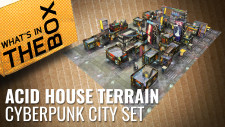
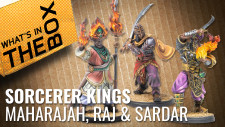
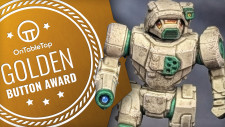
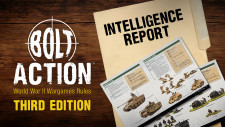
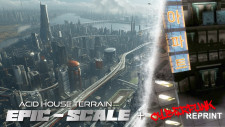
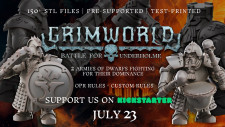



It is a very fun game to play. The No Peace Beyond the Line even has a decent campaign system that you can use. My group is using it right now.